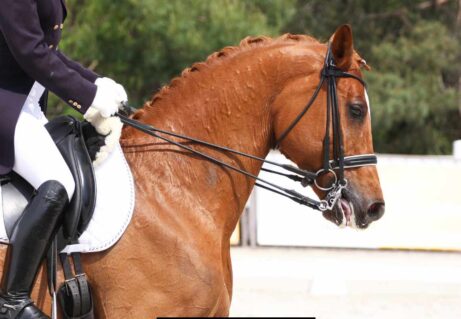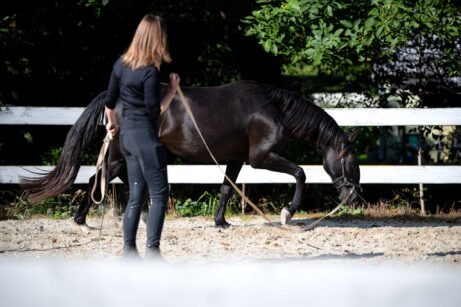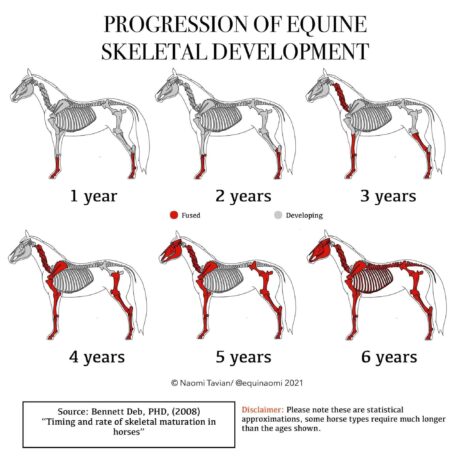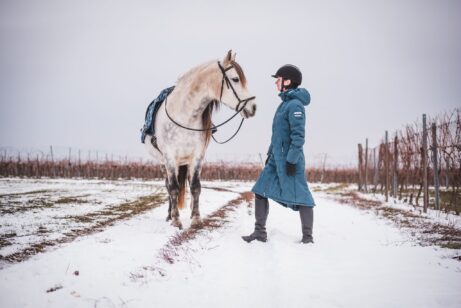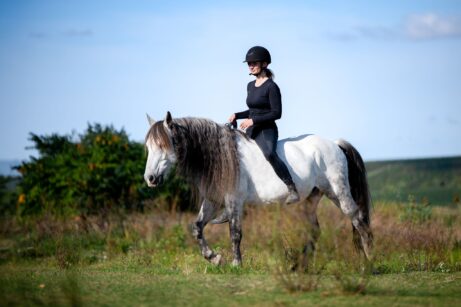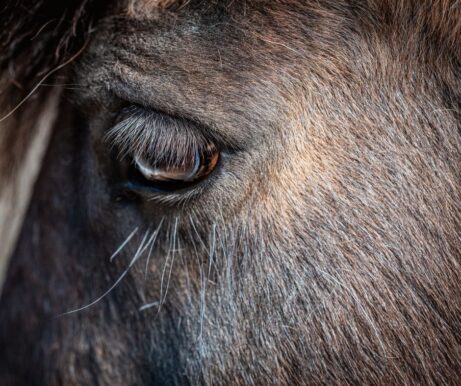Ten Commandments for Working (Not Only) with Young Horses
Horses are incredible animals. Inspirational, magical, tolerant, understanding, patient. We humans feel like we should be constantly teaching them, but it's the other way around. Horses can teach us so much more about life.
It's time to stop perceiving the preparation of a horse as training leading to their education. It should rather be a mutual process of growth, for both the rider and the horse. Our behavior towards the horse is deeply imprinted in their body and soul. I would like to inspire you with the principles that guide me when working (not only) with young horses.
There is just one unpleasant catch. These rules are strict mainly for the rider, not the horse. But I can assure you that thanks to them, you will grow.
1. Safety, Consistency, Boundaries
The safety of the horse and rider is always the top priority. I like to give the horses as much freedom as possible, including the freedom of choice. But in order to give them this freedom, I must be sure that they fully respect the boundaries we have set. That they understand these boundaries and that I can rely on their respect for them. Freedom and democracy only work if both sides consistently adhere to the established agreements. Therefore, I always start by defining the rules to ensure the greatest possible safety for myself, the horse, and our surroundings. Boundaries do not need to be set with force, usually absolute consistency and immutability of the rules is sufficient.
Firm boundaries are not a limitation for either party. On the contrary, they are a guarantee and certainty, a solid point in our shared communication. And most importantly, they can be safely built upon.
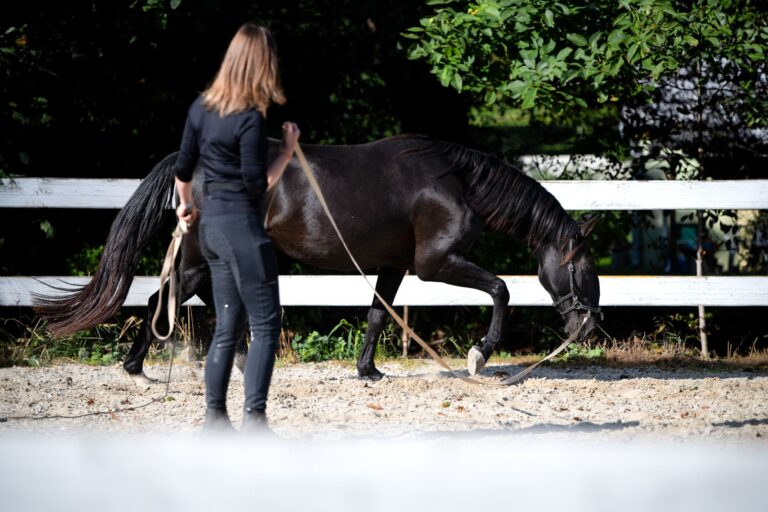
2. Trust
Within the firmly defined boundaries, there is endless space for trust. But trust must be mutual. We cannot force the horse to trust us if we do not trust them. And if we do not even trust ourselves. We build trust and a mutual relationship through seemingly trivial actions, through basic handling of the horse. Putting on the halter, leading, grooming, mutual understanding of the comfort zone and personal space. And also consistently following the established rules no matter what. Trust is incredibly fragile, and horses have an excellent memory, don't forget that.
3. Calmness
Calmness is the highest value for a horse. Calmness means safety. Horses are incredibly sensitive to our emotions and are very emotional themselves. Some immediately express their feelings, others store them within. We should create such a safe emotional environment for the horses that they are not afraid to express their unease and disagreement. In order to afford them this, we must be calm ourselves. Learn to recognize and manage our own emotions, be stable, predictable, not succumb to moods and frustrations, and resolve our emotional instability without burdening the horse.
A sign of emotional maturity is the ability to calmly manage the other's unrest. A horse that has the opportunity to function in an emotionally stable environment can paradoxically better cope with some unexpected rider's fluctuation, such as sudden nervousness or sadness. For truly authentic calmness, it is important to be able to release and relax the accumulated tensions that simply cannot be avoided in life. Otherwise, these tensions accumulate, build up, and then manifest as, for example, a sudden emotional outburst or a physical problem.
4. Positive Thinking
Always try to think positively. Focus on what the horse is good at, appreciate even the slightest effort, rejoice in their progress. Don't look at training as a set of things that don't go according to your expectations, but as a journey made up of many small steps. The horse won't enjoy the work if they don't feel it from you. Even when things aren't going well and the horse reacts differently than you expected, always keep a positive vision of the result you want to achieve in your mind.
Don't dwell on what didn't work out. Rewrite the formula that tells the horse (and quite possibly you as well) "this didn't work out" to "come on, let's try that even better!" It's not important for the horse to leave the arena with a drilled exercise, but the crucial thing is for them to leave with a good feeling. But this feeling must come from us and be genuine.
5. Reading Between the Lines
Horses communicate constantly. Among themselves and with us. They are constantly sending signals, but we ignore or fail to recognize and understand many of them. We understand when the horse lashes out at us or grimaces. But we don't pay as much attention to the slight tension in the body, the unrest in the eyes, the blinking, the ear movements, the changes in breathing, the tension in the mouth. And it is these signals that come first and are the most crucial. Horses try to do everything at the most subtle level, saving the energy they might need to flee from predators. If they resort to "expressive" communication (such as an attack), it means that we missed a lot of their previous small warnings.
Unfortunately, we humans tend to take everything personally and relationally. But horses don't communicate to annoy us, but because that's how they truly feel. We shouldn't suppress their behavior, but rather address it and look for the causes. We should be able to recognize the smallest deviations in the horse's behavior, distinguish their mood, pain, and dissatisfaction. Observe signs of tension, stress, relaxation, and even more, respond to them in an appropriate manner.
6. Perceive, Understand, Respond
Many riders yearn to understand horses. But when they start to understand them, they are greatly surprised to find that the horses are not saying what they had imagined. Horses are honest, often brutally honest. They tell us things about ourselves that we didn't want to hear, and it is immensely challenging for our ego to come to terms with this. Our task and at the same time a great challenge is to accept this information, not to resist it, not to question it, but to process it. Accept the messages of the horses as they are, even when they don't suit us.
There are situations where we simply have to push them to where we need them to go. For example, when we need to pass through a place where they are afraid, or when we need them to tolerate an unpleasant treatment. However, we must always make it clear to the horse that we understand them, that we perceive them, even if at that particular moment we really have to insist on our own way. Whenever possible, we should compromise, give the horse more preparation time, more time to process the situation, and so on. Communication must always be open and mutual.
7. Never Let the Horse Fail
Never let the horse fail. You've surely heard experienced horse people say that you mustn't let the horse win, that you have to show them who's in charge, that you're the boss. But what if it doesn't have to be that way? What if there's a way to work with the horse so that they don't have to be broken, subdued, humiliated, processed, bound, and dominated?
The training of a horse can be done without any losers. Victory doesn't mean that someone has to lose. It can quite well be a win-win situation, where both sides win because they cooperate to their mutual satisfaction. The horse should leave each training session as a winner, one who succeeded, who was praised, who was appreciated. It's up to us, the riders, to design the trainings in this way. Don't just think about the exercises the horse must complete. Plan and continuously adapt the training so that the horse succeeds.

8. Rewrite the Patterns and Offer Solutions
If we need to modify the horse's behavior, it is not appropriate to do so by mere prohibitions. If we simply prohibit the horse from inappropriate behavior and at the same time do not indicate to them what behavior we consider more appropriate and more advantageous for them, we are only driving them into a corner, significantly increasing the likelihood that they will panic and start to resist. Every restriction must go hand in hand with instructions on how to calmly get out of the situation.
Rewrite the behavioral patterns by replacing them with other, positive ones. If at all possible, think ahead about how you will resolve the situation. In conflicts, try to stay positive, don't let yourself be swept away by emotions or fear. Stay with the horse, offer solutions, be their solid point. They will learn to seek security and calm in you, they will rely on your advice and your judgment, and they won't be forced to solve crisis situations in by panicking.
9. Better to Undertrain Than Overtrain
Always train below the horse's capabilities. Physical exhaustion is a significant stressor for horses. How would a tired horse flee a pack of wolves? We will maintain the horse's motivation only if the training is positive, successful, and relatively short. Free yourself from the idea that you have to be guided by the clock. Be guided by your feelings instead. Some days the horse will cooperate more joyfully, other times there won't be time for harder exercises, and sometimes it's better not to train at all. Give them the opportunity to express themselves and respect their opinion. If you cannot go with their ideas, at least indicate that you perceive and understand them and ask for their forbearance. Remember that less is often more.
10. Give Time
Time is against you only if you're in a hurry. If you are constrained by time, if you are preparing horses within strictly defined time frames, if you have to meet deadlines or ride 5 horses a day, the probability that you will be able to give the horse what it needs is greatly reduced. Horses are not guided by time, it is not a defining factor for them. Only we are used to clinging to it and measuring our success in time. This is why many sports disciplines are also timed.
However, if the horse is more of a partner than a sporting tool for us, we should be guided by their clock. Give them as much time as they need, don't push the training according to charts, competitions or other riders, but purely according to how the horse feels. Don't move on to the next step if they are not yet completely comfortable and at ease with the previous one. Patience is a quality that you will certainly make use of when preparing (not only) young horses. The time you will save by rushing something will undoubtedly turn against you, and you will take much longer to fix the consequences of hasty actions and excessive pressure. Don't be guided by time, but fully utilize it in the rhythm of your horse.
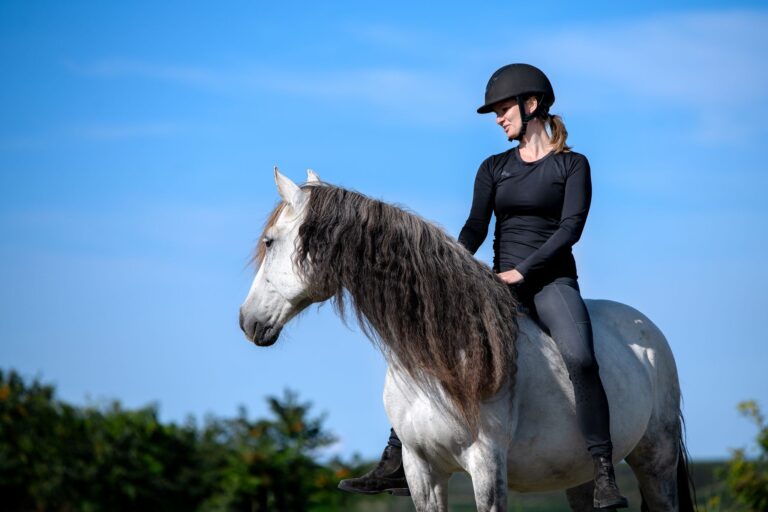
Read more

